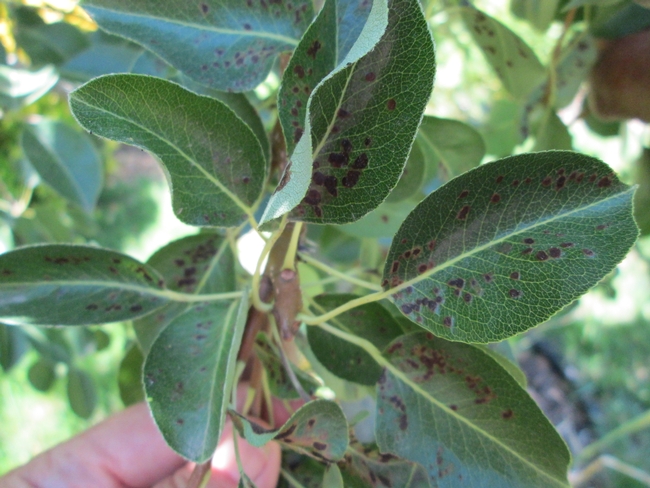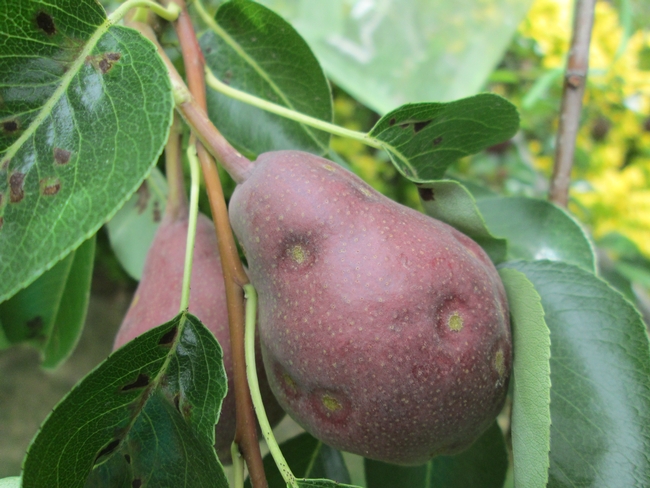As winter turned into spring and the 'Bartlett' pear tree flowered and leafed out, I celebrated my great gardening success. In fact I was jubilant because it looked as though I had finally won the battle against fire blight! For the first time in four years there were none of the telltale signs of this disease - no blackened leaves or "shepherd's crook" stem tips. For a time it looked as though I would never win, but careful pruning and rigorous attention to hygiene had finally paid off.
My only problem now was how to restore the tree into something that would justify my title of Master Gardener.
The tree had put on a lot of growth last year, and in typical pear fashion, all the new growth was fastigiate, shooting skywards with nothing but weakly attached, narrow crotch angles around the trunk and vertical stems emanating further out from the old, lateral branches. It looked a complete mess, and in spite of studying this problem over several months I had no idea how to tackle it. I became paralyzed with indecision and did nothing.
This spring, the tree was covered in flowers and set a good crop, which for once were not damaged with frost rings, and there was still no sign of fire blight. However, as I thinned the fruits I noticed that some of them were distorted, and a few of the leaves were developing blisters and brown spots suggesting that the tree had a new problem: pear blister mites.

By this time of year there was no hope of getting any control by spraying, so my next chance will be after harvest, in October or November when the mites travel away from the leaves and take up residence in the developing buds for the winter where they are again protected from the effects of sprays.
There is a small window of opportunity during this migration, and I will check for mite activity by sampling buds at various intervals and looking at them under a strong magnifying lens in order to monitor mite activity, and then spray to control. In order to comply with organic growing principles the chief methods of control available are either oil sprays or sulfur sprays. Some pears such as comice or Anjou are damaged by sulphur which cuts down on options for those varieties.
I think that I would rather deal with fire blight!
Maybe next I will be luckier.
For more information:
- https://ipm.ucanr.edu/agriculture/pear/pearleaf-blister-mite/
- https://ipm.ucanr.edu/agriculture/pear/dormant-to-delayed-dormant-sampling/
